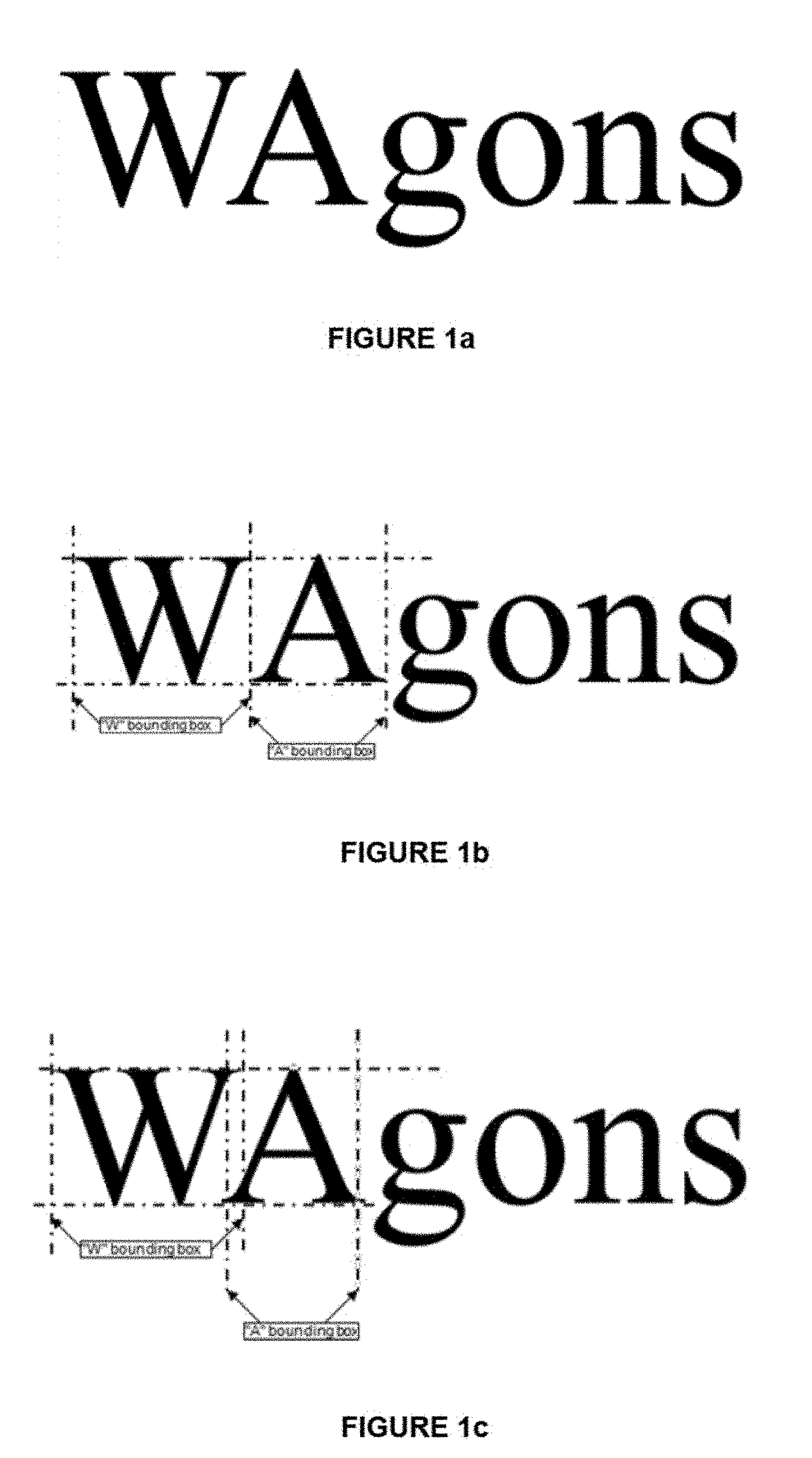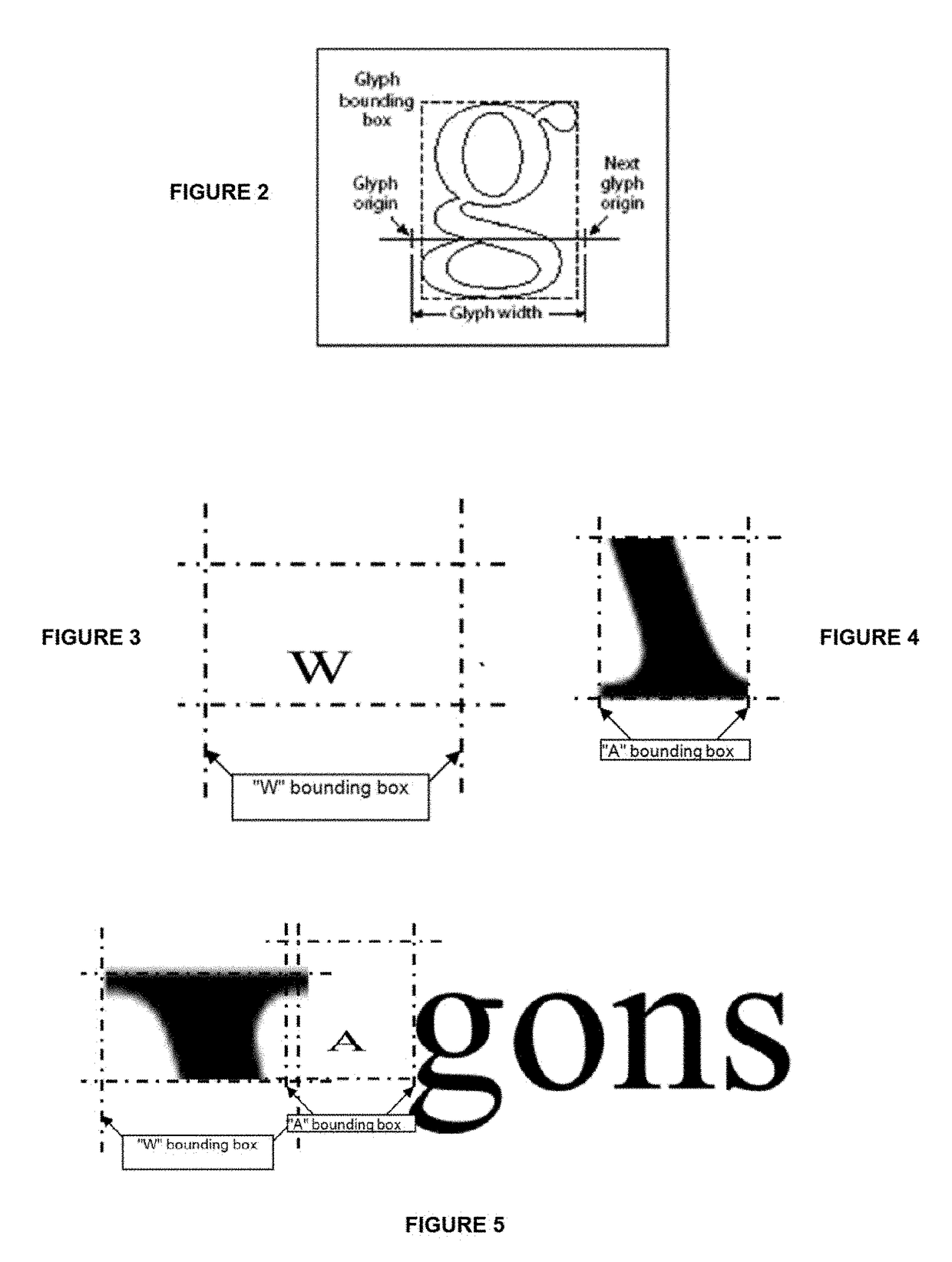Method for obfuscating the display of text
a text display and display method technology, applied in image data processing, program/content distribution protection, transmission, etc., can solve the problems of not supporting and/or including decryption algorithms aimed at decrypting encrypted payloads, still possible to tamper with electronic documents, and inability to display text, so as to avoid the reconstruction of text content
- Summary
- Abstract
- Description
- Claims
- Application Information
AI Technical Summary
Benefits of technology
Problems solved by technology
Method used
Image
Examples
example 1
[0132]With reference to FIG. 14a there is shown the electronic page description of a regular non obfuscated font in PDF for the word “WAGON”, while FIG. 14b illustrates an example of an obfuscated electronic page description for displaying the word “WAGON” in PDF.
[0133]As shown in FIG. 14a, the page description language (PDL) shows the base font as being the Times-Roman at 150 and calls for this font at 152 (see “TRoman 1 tf Times-Roman”) to use the glyphs of this font for the display of characters of the word WAGON as shown at 153 ([(WAGON)]TJ). Realize that the ASCII code for character A is 65 (see: FirstChar 65 at 151) and the ASCII code for character W is 87 (see LastChar 87). As shown at 151 the characters of this font extend between are A to W (the choice of FirstChar65 and LastChar 87 is defined by the fact that A and W define a portion of the alphabet characters needed for the word WAGON whereby A defines one extremity and W define the opposite one and the character G, N and...
PUM
 Login to View More
Login to View More Abstract
Description
Claims
Application Information
 Login to View More
Login to View More - R&D
- Intellectual Property
- Life Sciences
- Materials
- Tech Scout
- Unparalleled Data Quality
- Higher Quality Content
- 60% Fewer Hallucinations
Browse by: Latest US Patents, China's latest patents, Technical Efficacy Thesaurus, Application Domain, Technology Topic, Popular Technical Reports.
© 2025 PatSnap. All rights reserved.Legal|Privacy policy|Modern Slavery Act Transparency Statement|Sitemap|About US| Contact US: help@patsnap.com



